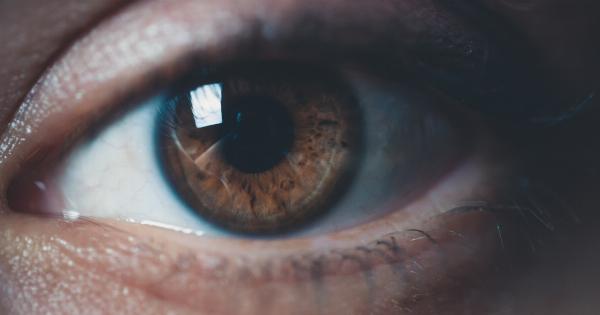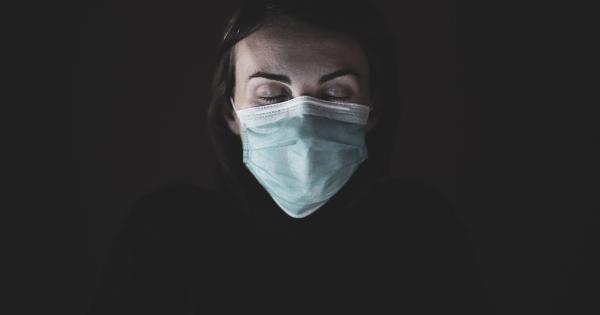When it comes to eye health, both men and women face various challenges. However, research has shown that women tend to be more susceptible to certain eye conditions.
These illnesses can impact women’s vision and overall eye health, making it crucial for them to be aware of the risks and take necessary precautions. In this article, we will explore some of the eye illnesses that women are more prone to and discuss preventive measures to maintain healthy eyes.
1. Dry Eye Syndrome:
Dry Eye Syndrome is a common condition that affects millions of people worldwide. However, it is found to be more prevalent in women, especially post-menopause.
Dry Eye Syndrome occurs when the eyes do not produce enough tears or when the tears evaporate too quickly. This leads to dry, irritated, and red eyes. Women undergoing hormonal changes, such as during menstruation or menopause, are more likely to experience this condition.
To prevent and manage Dry Eye Syndrome, women can use lubricating eye drops and avoid environmental triggers like dry or smoky environments.
2. Age-Related Macular Degeneration (AMD):
Age-Related Macular Degeneration is a progressive eye condition that primarily affects the central part of the retina, called the macula. Studies have shown that women have a higher risk of developing AMD compared to men.
Hormonal factors, genetic predisposition, and lifestyle choices can contribute to this increased susceptibility. Quitting smoking, eating a healthy diet rich in green leafy vegetables and omega-3 fatty acids, as well as regular eye examinations, can help reduce the risk of AMD in women.
3. Cataracts:
Cataracts are characterized by the clouding of the lens inside the eye, leading to blurred vision and visual impairment. While cataracts can affect both men and women, studies suggest that women are more likely to develop cataracts.
Hormonal changes, exposure to UV radiation, and certain medications can increase the risk of cataracts in women. Protecting the eyes from sunlight with sunglasses and a wide-brimmed hat, quitting smoking, and maintaining a healthy lifestyle can help prevent cataracts.
4. Glaucoma:
Glaucoma is a group of eye conditions that damage the optic nerve, often caused by high intraocular pressure. Although men and women are equally susceptible to developing glaucoma, certain types of glaucoma have a higher prevalence in women.
For example, primary open-angle glaucoma is more common in women, and they are also more likely to develop glaucoma due to conditions like pregnancy, hormone therapy, and menopause. Early detection through regular eye exams and treatments like eye drops or surgery can help manage glaucoma in women.
5. Graves’ Eye Disease:
Graves’ Eye Disease, also known as thyroid eye disease, is an autoimmune condition that affects the eyes and is commonly associated with an overactive thyroid.
Research suggests that women are up to five times more likely to develop Graves’ Eye Disease compared to men. The exact reason behind this gender predisposition is unknown, but hormonal factors and genetic susceptibility may play a role.
Managing the underlying thyroid condition, using lubricating eye drops, and protecting the eyes from irritants can help reduce the impact of Graves’ Eye Disease.
6. Retinal Detachment:
Retinal detachment occurs when the retina peels away from the underlying tissue layer, leading to vision loss if left untreated. While both men and women can experience retinal detachment, some studies have found a slightly higher incidence in women.
Hormonal changes associated with pregnancy and menopause, as well as conditions like nearsightedness, increase the risk of retinal detachment. Regular eye exams, especially for individuals at higher risk, play a crucial role in early detection and treatment of retinal detachment.
7. Diabetic Retinopathy:
Diabetic Retinopathy is a complication of diabetes that affects the blood vessels in the retina, leading to vision loss. Women with diabetes are at a higher risk of developing diabetic retinopathy compared to men with diabetes.
Hormonal changes during pregnancy and menopause can further exacerbate the risk. Proper diabetes management, regular eye exams, and maintaining a healthy lifestyle are essential for preventing and managing diabetic retinopathy in women.
8. Ocular Migraines:
Ocular migraines are a type of migraine that primarily affects the eyes, causing temporary vision loss or visual disturbances. Although ocular migraines can occur in both men and women, they are more commonly reported in women.
Hormonal changes during the menstrual cycle, pregnancy, or menopause can trigger ocular migraines. Identifying triggers, stress management, and medication prescribed by a healthcare professional can help control and prevent ocular migraines in women.
9. Dryness and Irritation from Cosmetics:
While not a specific eye illness, women are more likely to experience dryness and irritation due to the use of cosmetics around the eye area. Eye makeup, especially mascara and eyeliner, can sometimes cause allergic reactions or lead to dryness.
It is essential for women to choose hypoallergenic and ophthalmologist-tested cosmetics, properly remove makeup before sleep, and replace products that may have expired to prevent eye irritation.
10. Hormonal Changes and Visual Disturbances:
Hormonal fluctuations during different stages of a woman’s life, such as menstruation, pregnancy, and menopause, can sometimes cause visual disturbances. These disturbances can include blurred vision, dry eyes, or sensitivity to light.
While these symptoms are often temporary, it is important for women to consult with an eye care professional if they experience prolonged or severe visual disturbances.





















